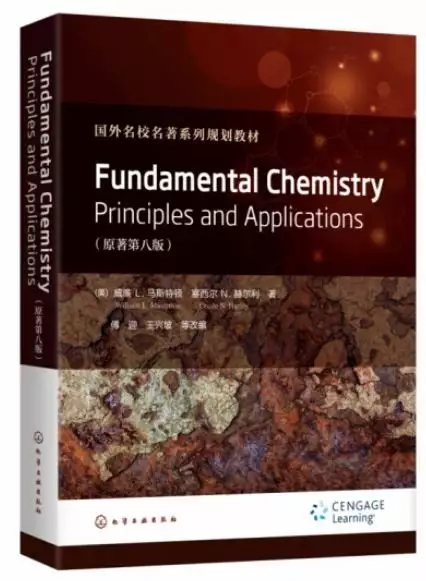decay英文的問題,我們搜遍了碩博士論文和台灣出版的書籍,推薦寫的 三民精解英漢辭典(全新增訂版) 和(美)威廉L.馬斯特頓 等的 Fundamental Chemistry:Principles and Applications(原著第八版)都 可以從中找到所需的評價。
這兩本書分別來自三民 和化學工業所出版 。
國立清華大學 工程與系統科學系 陳紹文、王仲容所指導 黃志中的 金山核電廠TRACE/PARCS模式之圍阻體系統及爐心中子動力學拓展與應用 (2021),提出decay英文關鍵因素是什麼,來自於TRACE、PARCS、CONTAN、金山核電廠、電廠全黑、喪失冷卻水事件、斷然處置措施。
而第二篇論文國防大學 戰略研究所 葛惠敏所指導 林秋明的 習近平主政時期維穩政策之研究:以科技維穩為例 (2021),提出因為有 維穩、科技維穩、數位威權體制、社會控制的重點而找出了 decay英文的解答。
三民精解英漢辭典(全新增訂版)

為了解決decay英文 的問題,作者 這樣論述:
政大教授莫建清老師全新修訂 追加近100則詞條,一網打盡2020年教育部公布之高中英文參考詞彙 新增約500篇詞源相關解說,詞彙實力更上層樓 全新增訂「英語詞形的千變萬化」專文 全新年度風雲詞彙總整理 《三民精解英漢辭典》為一本程度在高中左右,特別偏重英語詞彙分析及解說的學習型辭典,強調從英語構詞 (morphology) 和詞源 (etymology) 的角度,帶領讀者認識英語單字,讓詞彙的學習與理解變得更有效率。 主要特色: 1. 收錄詞條約16,146,囊括教育部2020年公布的高中英文參考詞彙6,000餘則 2. 獨步全臺的「
說文解字」與「詞源探索」單元,條理分明的字詞結構解說及詞源分析,讓人輕鬆理解詞義演變 3. 詞源說明融入13項英語構詞重要概念,強化對詞彙結構的掌握 4. 以句法結構框詳細解說句型,輔以大量例句,確實奠定文法概念 5. 設有「語法」、「參考」等補充解說單元,針對文法、詞義、用法易混淆處加以闡釋 6. 情境式全頁插圖及相關字彙圖解,加強生活字彙與會話應用 7. 重要詞彙加大字級或套色印刷,版面清晰,方便查閱 8. 收錄全新年度風雲詞彙
decay英文進入發燒排行的影片
[Joyce Is Moist: for HKG] Stoned Vibes Makeup Tutorial 歐美風化妝教學 (粵/En Subs)
今日隨心用Urban Decay 新 Stoned Vibes Eyeshadow Palette教你化一個歐美風妝!
(片內講廣東話+英文)
In this makeup tutorial, I share a makeup look i made using the Urban Decay Stoned Vibes Palette. Let me know what you think, enjoy!
(Cantonese and English)
Edited by Katrina L
Previous Video:
[Joyce is Moist: for HKG] 3 Barrel Waver Tutorial 三管波浪鬈髮教學 (粵/En Subs)
https://youtu.be/hSoulXLvp6k
New Music Video for latest single
https://youtu.be/RyoFapcT8o4
Hi! I’m a 30-something singer, actor and jokester originally from Canada based in Hong Kong, trying to navigate life. Come join my adventures with me!
Follow me on Instagram: @princejoyce
https://www.instagram.com/princejoyce/?r=nametag
And Facebook: https://www.facebook.com/joycecheng.page/
金山核電廠TRACE/PARCS模式之圍阻體系統及爐心中子動力學拓展與應用
為了解決decay英文 的問題,作者黃志中 這樣論述:
TRACE是一個強而有力的核電廠安全分析程式,目前的金山核電廠TRACE模式,經驗證後已可應用於相當多的安全分析上,但是主要都是在爐心熱流的安全分析。因此,本論文的研究方向是將目前金山核電廠TRACE模式分析計算發展至下游的圍阻體系統分析及上游的中子動力學計算。下游方向發展至圍阻體分析方面,發展金山核電廠TRACE/CONTAN模式,將爐心熱流分析的TRACE結合圍阻體分析的組件CONTAN,以進行爐心熱流及圍阻體系統同步計算分析。本研究已應用TRACE/CONTAN模式進行LOCA、SBO 24小時及URG的分析。其中LOCA事故分析顯示TRACE/CONTAN模式與FSAR及GOTHIC
程式分析結果比較,可以獲得令人滿意的分析結果。SBO 24小時事故分析顯示,比較TRACE/CONTAN模式與RETRAN-02加上SHEX的分析結果,兩者也十分吻合。金山核電廠的TRACE/CONTAN模式進行URG分析的結果顯示,URG的兩階段降壓策略,較直接作緊急降壓,可更有效降低事故過程的燃料護套尖峰溫度,所需的最小替代注水量也遠低於直接作緊急降壓。上游方向拓展至中子動力學計算方面,發展金山核電廠TRACE/PARCS模式,將爐心熱流分析的TRACE結合反應爐爐心模擬器PARCS,以進行爐心熱流及爐心中子熱力學同步計算分析,本研究已利用電廠啟動測試資料的暫態案例,進行金山核電廠TRAC
E/PARCS模式的驗證,驗證分析包括六項啟動測試暫態分析,模擬結果顯示TRACE/PARCS模式可以良好的分析金山核電廠的啟動測試暫態,並且具備一定的準確度。金山核電廠TRACE/PARCS模式進一步應用於控制棒擾動穩定性模擬上,由模擬的結果可明顯的觀察到功率以及燃料組件內流量的震盪,並驗證爐心系統的穩定性。
Fundamental Chemistry:Principles and Applications(原著第八版)

為了解決decay英文 的問題,作者(美)威廉L.馬斯特頓 等 這樣論述:
《FundamentalChemistry:PrinciplesandApplications》主要參考醫學類相關專業《基礎化學》教學大綱所規定的教學內容改編而成,整合改編後共15章內容,主要包括:原子(Atoms)、電子結構和元素週期表(ElectronicStructureandthePeriodicTable)、共價鍵(CovalentBonding)、熱力學(Thermochemistry)、自發反應(SpontaneityofReaction)、氣體的化學平衡(GaseousChemicalEquilibrium)、反應速率(RateofReaction)、液體和固體(Liquids
andSolids)、溶液(Solutions)、酸和堿(AcidsandBases)、酸堿平衡(EquilibriainAcid-BaseSolutions)、沉澱溶解平衡(PrecipitationEquilibrium)、電化學(Electrochemistry)、配位化合物(ComplexIons)以及核反應(NuclearReactions)。 在本書的改編過程中,在尊重原教材版權的基礎上,編者在遵循適合教材所涵蓋的知識體系的同時,盡可能體現原書的風格和特點,使內容更加精煉緊湊。 《FundamentalChemistry:PrinciplesandApplications》可
供國內基礎、臨床、口腔、麻醉、預防、護理、生物工程、藥學等醫學類相關專業基礎化學類課程的雙語教學和留學生教學使用,也可供其他專業基礎化學雙語教學的師生及科技工作者用作參考書。 1 Atoms 1 1-1 Atoms and the Atomic Theory 1 1-2 Components of the Atom 2 The Human Side: John Dalton 3 1-3 Quantitative Properties of the Atom 5 1-4 Introduction to the Periodic Table 11 Beyond The Clas
sroom: Mastering the Peri’god’ic Table 14 Summary Problems 16 Questions and Problems 16 2 Electronic Structure and the Periodic Table 19 2-1 Light, Photon Energies, and Atomic Spectra 20 2-2 The Hydrogen Atom 25 2-3 Quantum Numbers 28 2-4 Atomic Orbitals; Shapes and Sizes 32 2-5 Electron Configurat
ions in Atoms 33 The Human Side: Glenn Theodore Seaborg 37 2-6 Orbital Diagrams of Atoms 38 2-7 Electron Arrangements in Monatomic Ions 40 2-8 Periodic Trends in the Properties of Atoms 43 Beyond The Classroom: Why Do Lobsters Turn Red When Cooked 47 Summary Problems 49 Questions and Problems 49 3
Covalent Bonding 52 3-1 Lewis Structures; The Octet Rule 53 The Human Side: Gilbert Newton Lewis 62 3-2 Molecular Geometry 62 3-3 Polarity of Molecules 70 3-4 Atomic Orbitals; Hybridization 73 Beyond The Classroom: The Noble Gases 80 Summary Problems 81 Questions and Problems 81 4 Thermochemistry 8
5 4-1 Principles of Heat Flow 86 4-2 Measurement of Heat Flow; Calorimetry 90 4-3 Enthalpy 93 4-4 Thermochemical Equations 94 4-5 Enthalpies of Formation 100 4-6 Bond Enthalpy 105 4-7 The First Law of Thermodynamics 107 Beyond The Classroom: Energy Balance in the Human Body 111 Summary Problems 113
Questions and Problems 113 5 Spontaneity of Reaction 116 5-1 Spontaneous Processes 117 5-2 Entropy, S 119 5-3 Free Energy, G 123 The Human Side: J. Willard Gibbs 125 5-4 Standard Free Energy Change, ΔG 125 5-5 Effect of Temperature, Pressure, and Concentration on Reaction Spontaneity 129 5-6 The Fr
ee Energy Change and the Equilibrium Constant 134 5-7 Additivity of Free Energy Changes; Coupled Reactions 135 Beyond The Classroom: Rubber Elasticity: An Entropic Phenomenon 137 Summary Problems 139 Questions and Problems 139 6 Gaseous Chemical Equilibrium 144 6-1 The N2O4–NO2 Equilibrium System 1
45 6-2 The Equilibrium Constant Expression 148 6-3 Determination of K 153 6-4 Applications of the Equilibrium Constant 156 6-5 Effect of Changes in Conditions on an Equilibrium System 161 Beyond The Classroom: An Industrial Application of Gaseous Equilibrium 166 Summary Problems 168 Questions and Pr
oblems 169 7 Rate of Reaction 171 7-1 Meaning of Reaction Rate 171 7-2 Reaction Rate and Concentration 174 7-3 Reactant Concentration and Time 180 7-4 Models for Reaction Rate 186 The Human Side: Henry Eyring 189 7-5 Reaction Rate and Temperature 190 7-6 Catalysis 193 7-7 Reaction Mechanisms 195 Be
yond The Classroom: The Ozone Story 199 Summary Problems 201 Questions and Problems 202 8 Liquids and Solids 206 8-1 Comparing Solids, Liquids, and Gases 206 8-2 Liquid-Vapor Equilibrium 207 8-3 Phase Diagrams 213 8-4 Molecular Substances; Intermolecular Forces 216 Beyond The Classroom: Supercritic
al Carbon Dioxide 222 Summary Problems 224 Questions and Problems 224 9 Solutions 227 9-1 Concentration Units 227 9-2 Principles of Solubility 236 9-3 Colligative Properties of Nonelectrolytes 241 9-4 Colligative Properties of Electrolytes 250 Beyond The Classroom: Maple Syrup 252 Summary Problems
254 Questions and Problems 254 10 Acids and Bases 257 10-1 Br nsted-Lowry Acid-Base Model 257 10-2 The Ion Product of Water 259 10-3 pH and pOH 259 10-4 Weak Acids and Their Equilibrium Constants 265 10-5 Weak Bases and Their Equilibrium Constants 274 10-6 Acid-Base Properties of Salt Solutions 278
10-7 Extending the Concept of Acids and Bases: The Lewis Model 281 Beyond The Classroom: Organic Acids and Bases 282 Summary Problems 285 Questions and Problems 285 11 Equilibria in Acid-Base Solutions 288 11-1 Buffers 288 11-2 Acid-Base Indicators 299 11-3 Acid-Base Titrations 302 Beyond The Clas
sroom: Acid Rain 311 Summary Problems 313 Questions and Problems 313 12 Precipitation Equilibria 316 12-1 Solubility; Solubility Product Constant (Ksp) 316 12-2 Precipitate Formation 323 12-3 Dissolving Precipitates 327 Beyond The Classroom: Qualitative Analysis 331 Summary Problems 333 Questions a
nd Problems 334 13 Electrochemistry 337 13-1 Oxidation-Reduction Reactions Revisited 338 13-2 Voltaic Cells 342 13-3 Standard Voltages 346 13-4 Relations Between E , DG , and K 353 13-5 Effect of Concentration on Voltage 355 Beyond The Classroom: Fuel Cells: The Next Step in Chemical-to-Electrical-
Energy Conversion 359 Summary Problems 361 Questions and Problems 362 14 Complex Ions 366 14-1 Composition of Complex Ions 367 14-2 Naming Complex Ions and Coordination Compounds 371 14-3 Geometry of Complex Ions 373 14-4 Electronic Structure of Complex Ions 377 The Human Side: Alfred Werner 377 14
-5 Complex Ion Equilibria; Formation Constant (Kf) 382 Beyond The Classroom: Chelates: Natural and Synthetic 384 Summary Problems 386 Questions and Problems 387 15 Nuclear Reactions 389 15-1 Nuclear Stability 389 15-2 Radioactivity 391 The Human Side: Marie and Pierre Curie with daughter Irene, at
their home near Paris 397 15-3 Rate of Radioactive Decay 397 15-4 Mass-Energy Relations 400 15-5 Nuclear Fission 404 15-6 Nuclear Fusion 407 Beyond The Classroom: Biological Effects of Radiation 409 Summary Problems 410 Questions and Problems 410 Appendices Appendix 1 Units, Constants and Referenc
e Data 413 Appendix 2 Properties of the Elements 419 Appendix 3 Exponents and Logarithms 421 Appendix 4 Molecular Orbitals 426 Appendix 5 Answers to All Questions and Problems 431 Conversion Factors 443 Table of Atomic Masses 444 IUPAC Periodic Table of the Elements 445 《FundamentalChemis
try:PrinciplesandApplications》是為學習基礎化學類課程的本科教學而改編的英文教材。本書可供本科醫學類相關的基礎、臨床、口腔、麻醉、預防、護理、生物工程、藥學等專業使用。 化學工業出版社組織了國內多所高等院校中富有醫學類相關專業基礎化學課程教學經驗的教師,對大量相關的英文教材進行了廣泛閱讀和篩選,最後確定改編由WilliamL.Masterton和CecileN.Hurley合作編著的《Chemistry:PrinciplesandReactions》(8th)一書。 該教材的改編主要參考醫學類相關專業《基礎化學》教學大綱所規定的教學內容,選定整合成十五章,供基礎
化學類課程的雙語教學和留學生教學使用,也可供基礎化學雙語教學的師生及其他科技工作者用作參考書。 改編工作在尊重原教材版權的基礎上,保留了原教材中的大部分內容,也保留了章後的“ChemistryBeyondTheClassroom”“KeyConcepts”“KeyEquations”“KeyTerms”“SummaryProblems”等板塊,以及原教材完整的Appendix部分和對應的習題答案。調整了原教材部分章節順序和標題,並把部分內容合併到了關聯度更恰當的相應章節;刪減了原教材中有機化學及元素性質等內容;刪除了全書最後的Index部分和部分習題及對應的答案。 在本書的改編過程中,編者
在遵循適合教材所涵蓋的知識體系的同時,力求盡可能體現原書的風格和特點,使內容更加精煉緊湊。 該改編教材的不妥之處,敬請廣大讀者批評指正。 傅迎王興坡 2019年5月
習近平主政時期維穩政策之研究:以科技維穩為例
為了解決decay英文 的問題,作者林秋明 這樣論述:
「維穩」乙詞為「維護社會穩定」的簡稱,是中共維護政治安全的法寶之一,自現任領導人習近平就任後,伴隨今日資訊科技的發展和中國大陸經濟勢力的崛起,讓維穩工作如虎添翼,產生更大影響與效能。近年來中共「數位威權體制」統治力量,採取資訊扭曲和輿論操控,專注在國家制度建構、國家與市場關係、國家與社會關係與社會力量崛起與國家的回應,以確保其政治安全與共黨政治利益,該作為不僅一直是引人關注的議題,更是兩岸關係研究領域的重要課題,本文希望藉由習近平主政後「科技維穩」之概念切入觀察。首先探究維穩的緣起與歷任領導人維穩脈絡;之後梳理習近平主政後維穩變革、社會治理、社會控制政策,據以探究其主政後藉由中國大陸科技發展
來支撐維穩策略與實踐,對我國產生的影響。本研究最後述及以上發現對我安全事務產生的影響,並檢視我國政府當前對應,策進未來作法。